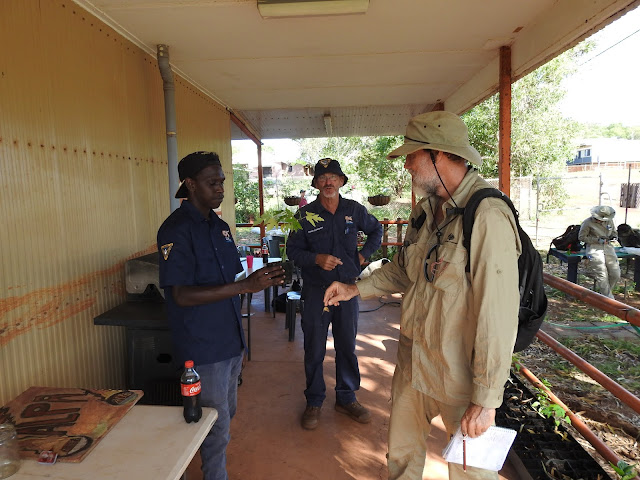BIOSECURITY - ANTS, PLANTS, and INSECTS
Greetings from Croker Island.
Recently, we had a team of scientists from the Commonwealth Government's Biosecurity Department visit to conduct a plant and insect survey. Garngi Rangers assisted. Biosecurity Australia are keen to keep out unwanted plants, insects and diseases that would cause major issues for our agricultural industries further south.
Below a plant scientists explains to Charlie how the scientific Latin plant naming system works.
Biosecurity Australia was particularly looking for a particular midge that was found here last year. This midge is known to carry the African Horse Virus. This virus has now been discovered in Asia. If a virus carrying midge bites a horse they can die in just two days. To date, the African Horse Virus has not been detected in Australia yet, however the north westerly monsoon winds can carry the midges from Indonesian to Australia - hence need for vigilance.
More grubs - some grubs grow to be moths which sting citrus fruit causing significant losses for the industry.
The large bird below is a Jabiru. They usually are found on the floodplain so it was surprising to find this one wading in the salt water.
People accessing Aboriginal land without permission has been an issue. Twenty signs with poles etc arrived on the barge. Below Charlie and Bryan erect the first sign. Many of these signs need to be erected in very remote places which will require off road driving to get to parts of this island and our boat to get to some of the neighbouring islands.
Cheers Bryan and Nance
The wet season produces lots of growth - including weeds. Here ranger Clayton is spraying a range of wets season weeds.
Browsing ants are an exotic and very invasive ant originally from Europe however they have made their way to Asia over the years. Recently they were discovered in the Darwin Port. Twice a year we have to do Browsing Ant surveys. This involves laying many little bottles with baits in them at the barge landing and the dump - as below.
After an hour we return to inspect the bottles. Below we use an iPad (with an internal GPS) to record the location and other data which is then uploaded to Biosecurity Australia.
Until the next blog, stay safe and take care.













Comments